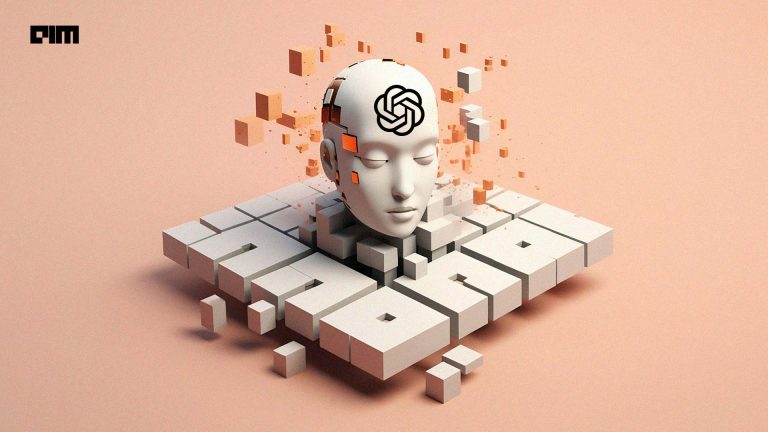|
Listen to this story
|
While the fear of ChatGPT-like models wiping out human jobs looms at large, the semiconductor design aspects, particularly VLSI design aspects, are as threatening.
In an exclusive conversation with AIM, Venkat Mattela, the founder and CEO of Ceremorphic, said that chip design is much more challenging and risky than software design. “In the chip industry, even a small mistake can result in significant financial loss. Currently, artificial intelligence (AI) is not yet advanced enough to guarantee 100% accuracy. It will require a lot of computing power and hardware design,” said Mattela, saying that it is possible in the next five years.
Towards ML in Chips
From the onset, Mattela explained that the current processing technology primarily relies on procedural programming, where a fixed set of instructions dictate the operation. As a result, the size of the computer is determined by the scale of the task at hand. However, Mattela believes that there is limited room for further advancements in this area, as companies such as Intel and AMD have already produced multiple chips based on this architecture.
This is why they have been working on learning-based processing, a form of machine learning which allows the system to learn to perform a task without explicit programming, by simply feeding a large amount of data. It is precisely for this reason—training in machine learning—that supercomputers are a need, which was not the case with procedural programming.
Training has become a crucial moat for all design companies because, even for a small task like detecting an image, the amount of training required takes days and weeks together.
“Training supercomputers is orders of magnitude more than trying to put multiple processes together in order to get a lot of performance,” adds Mattela.
The AI supercomputing chips have seeped into a variety of our everyday tools that include computer vision, speech recognition, and natural language processing.
However, Mattela highlights two main challenges associated with training supercomputers:
- Reliability: The larger the number of computer chips, the higher the probability of failure and with longer processing times, the risk of failure increases. In addition, since training takes weeks, the probability of failure also increases many fold. This is a big issue for companies in terms of costs, as a single failure can result in millions of dollars in losses.
- Energy consumption: The amount of power allowed for computing is limited, so enhanced performance can only be achieved by reducing power consumption, allowing for more chips to be used.
Therefore, the focus has to be on providing reliable performance computing at ultra-low energy. This is by no means an easy task. The problem doesn’t exist at one level. From the hardware system level to firmware algorithm to application level—it is important to optimise all ends together and connect them together in a very specific way.
Banking on India’s semiconductor vision
Ceremorphic works with companies either by offering their chip for purchase or by creating a chip using their expertise. Speaking on his plans in India, Mattela mentioned that the company is currently searching for a trustworthy manufacturing partner here, but is yet to find a suitable one.
On the R&D front, India is already ripe and it is relatively easy for companies to set up their R&D infrastructure here. The problem arises with manufacturing since there are primarily two hurdles in their path: first is expertise, to have an expert outside partner is necessary, and second, and perhaps the most important, is what can be added to that expertise.
This is majorly due to a particular issue that persists in the Indian context. Although there is technology and understanding, there is still a need for talent, which is a big challenge, especially in terms of attracting different hierarchies to talent. While everyone is latching on to producing talent for high-end research, there is not enough work done in the low-end. There is a need for people who can assemble products, rather than simply do mathematics.
“Infrastructure needs to be built at every level to attract and train talent in manufacturing, and to make India a hub for this industry,” said Mattela.
An interesting example that he points at is the case of the recent Union budget, where a reiterated focus has been directed towards upgrading in the higher-end—where they are essentially building on top of IITs, instead of attracting talent for manufacturing. This will most definitely lead to “having a strong upper body, but weak legs”.
As the physical limitations of creating smaller transistors become more pronounced, the exponential growth predicted by Moore’s Law is becoming harder to achieve. In this era of diminishing returns, chip architecture takes centre stage as a crucial factor in optimising performance and driving further innovation in the industry.
For example, it was common for fabless companies to produce several chips annually. However, in the present market, high-end geometry chips like 2nm, 3nm, 5nm, and so on, come with a significant cost. The real value today lies in having a versatile chip architecture that can serve multiple functions and cater to various markets.
Ceremorphic believes that it has the answers to the future of semiconductors in the country. With aspirations of becoming the next NVIDIA, Ceremorphic is focused on developing a trustworthy and energy-efficient AI supercomputing chip.



















































































